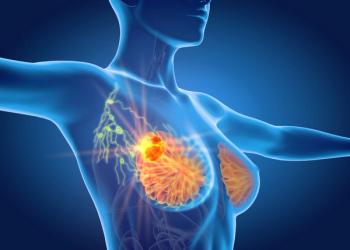
Oncology NEWS International
- Oncology NEWS International Vol 8 No 9
- Volume 8
- Issue 9
Virtual Endoscopy: An Innovation in GI Tract Imaging
NEW ORLEANS-Virtual endoscopy of the gastrointestinal tract is a rapidly advancing technology, Bradford J. Wood, MD, said in an interview with Oncology News International. “Radiologists should become familiar with the virtual endoscopic appearance of a variety of GI pathologies so that they can speak a common language with surgical and gastrointestinal endoscopists,” he said.
NEW ORLEANSVirtual endoscopy of the gastrointestinal tract is a rapidly advancing technology, Bradford J. Wood, MD, said in an interview with Oncology News International. Radiologists should become familiar with the virtual endoscopic appearance of a variety of GI pathologies so that they can speak a common language with surgical and gastrointestinal endoscopists, he said.
Dr. Wood and his colleagues from Massachusetts General Hospital reviewed the clinical applications of virtual endoscopy (also known as endoluminal imaging) of the GI system in a poster presentation at the American Roentgen Ray Society annual meeting. Dr. Wood is currently assistant professor of radiology at Georgetown University and an NIH staff clinician in the Department of Inter-ventional Radiology.
Virtual endoscopy has been studied mostly in the tracheobronchial tree and colon (see Figure 1). Colon cancer screening is likely to be the first and most important medical application of this technology, Dr. Wood said, since patients have been very reluctant to accept colonoscopy.
Helical CT scanningthe methodology for obtaining the data used in virtual endoscopyis widely available, Dr. Wood said. The scan is very brief, taking less than a minute in the prone and supine positions. As a result, the radiation dose is much lower than with conventional CT scans.
The innovative aspect of virtual endoscopy is the conversion of the helical CT data into three-dimensional volumetric images by sophisticated computer software, creating a virtual fly-through of the conduit being studied. The virtual images allow the clinician to visualize the whole inner surface, rather than piecemeal evaluation of slices, and to see beyond strictures and obstructions, Dr. Wood said.
Helical CT postprocessing allows study of GI applications once thought to be non-CT clinical issues, he said, such as depiction of mucosal processes and the relationship of abnormalities to the bowel itself. Dr. Wood said that this information is recorded on axial CT images, but is not normally processed and absorbed by most viewing systems.
Currently, the special conversion software is expensive and not widely available, he noted. In addition, he cautioned, interpretation of virtual endoscopy images takes more time and requires training to discriminate between pathology and artifact, as well as normal anatomy.
Shaded surface display methods are most commonly used because they are cheaper and faster than true volume rendering. Unfortunately, he noted, these methods are prone to thresholding error and loss of data. Until cheaper and faster methods of true volume rendering become available, he said, one solution might be for hospitals to transmit helical CT data to special centers for conversion and interpretation.
Like any technologic innovation, virtual endoscopy has its strengths and weaknesses, Dr. Wood commented. For example, the sensitivity and specificity are not equal to colonoscopy, but with colonoscopy, the gastroenterologist often cannot see beyond obstructions and strictures, and must estimate the precise location of lesions.
Virtual endoscopy allows for multiple views, including areas not accessible by endoscopy, and can establish the exact location of lesions, he said. Although mass contour and lumen shape may be better depicted by virtual endoscopy, certain anatomic information, such as mucosal detail, is better seen with real endoscopy, Dr. Wood noted. On the downside, he added, the procedure does not allow for tissue sampling.
Virtual endoscopy can assist in the characterization and depiction of a number of common GI pathologies, including gastric masses (see Figures 2 and 3), gall bladder disorders, and inflammatory bowel disease.
The small bowel is difficult to image by endoscopy, contrast barium fluoroscopy, or CT imaging, Dr. Wood said. It is often the last place to look for GI pathology, which is generally a diagnosis of exclusion. The virtual endoscope can be placed in the small bowel where fiberoptic scopes cannot pass, he said. And while the thickened folds of inflammatory bowel disease may not be seen on axial CT images, they can easily be depicted with endoscopy.
Overall, Dr. Wood said, virtual endoscopy has a number of potential uses, including a role in planning surgery or real endoscopy. It can also be used as a teaching tool.
Articles in this issue
over 26 years ago
‘Gonzalez Diet’ to Be Tested in Pancreatic Cancerover 26 years ago
Talking to Members of Congress About Cancer Issuesover 26 years ago
Modified SPECT Scintimammography Proves More Accurateover 26 years ago
Lilly Enjoined From Promoting Evista for Breast Cancer Preventionover 26 years ago
Experts Brief Capitol Hill on Trial Costs Surveyover 26 years ago
NIH Plan Quadruples Prostate Cancer Research Fundsover 26 years ago
Gabapentin as Adjuvant to Opioids in Neuropathic Painover 26 years ago
Biochemotherapy May Be an Option in Metastatic Melanomaover 26 years ago
PET Scans Spare Some NSCLC Patients From Mediastinoscopyover 26 years ago
Computer Technique Gives New Life to Thermal Breast ImagingNewsletter
Stay up to date on recent advances in the multidisciplinary approach to cancer.
















































































